Vietnam‘s floating seafood farms give you a rare look into the country’s aquaculture scene while serving up a travel experience you won’t soon forget. These places, especially in the Mekong Delta, blend old-school fishing with newer cultivation tricks.
When you tour these floating fish farms, you get the perfect chance to see how sustainable food production really works—and you get to live a bit of that genuine Vietnamese river life, too.
Floating farms aren’t just for show—they play a huge role in Vietnam’s food system and cultural story. Plenty of tours go beyond a quick look, letting you visit lively floating markets, sit down for meals made with seafood caught just hours before, and chat with the families who keep these floating businesses running.
From the colorful fishing villages near Chau Doc to the sprawling farms across the delta, these tours reveal how locals have learned to thrive on the water, building sustainable lives in the process.
1. Cai Beo Floating Fishing Village, Lan Ha Bay
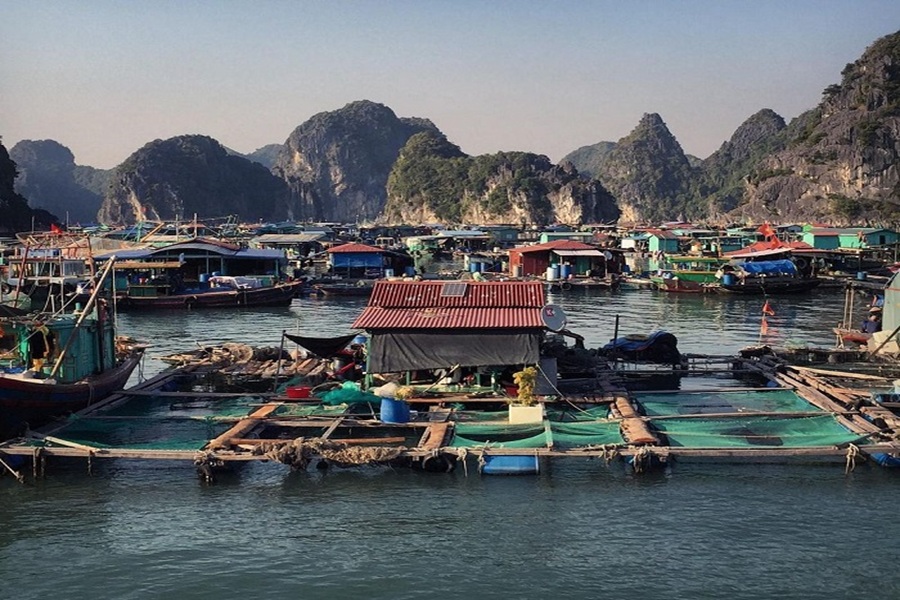
- Vietnam’s oldest authentic floating village – A historic community that lets you step into traditional Vietnamese fishing life, all surrounded by the stunning backdrop of Lan Ha Bay.
Just a short 1.5 km from Cat Ba town, Cai Beo Floating Village is a real highlight for any Vietnam seafood farm adventure. This ancient spot rests among the emerald waters and mossy islands of Lan Ha Bay.
Cruising through the calm waters, you’ll see around 300 households living as they have for generations. The floating homes, painted in bold colors, pop against those wild limestone cliffs.
Fishing and seafood farming fuel the village. Locals show off their fishing methods—many barely changed after centuries.
If you love seafood, you’ll be in heaven here. Grab oysters or fresh fish right in the village; it’s all pulled straight from the bay to your table.
2. Chau Doc Floating House Village, Mekong Delta
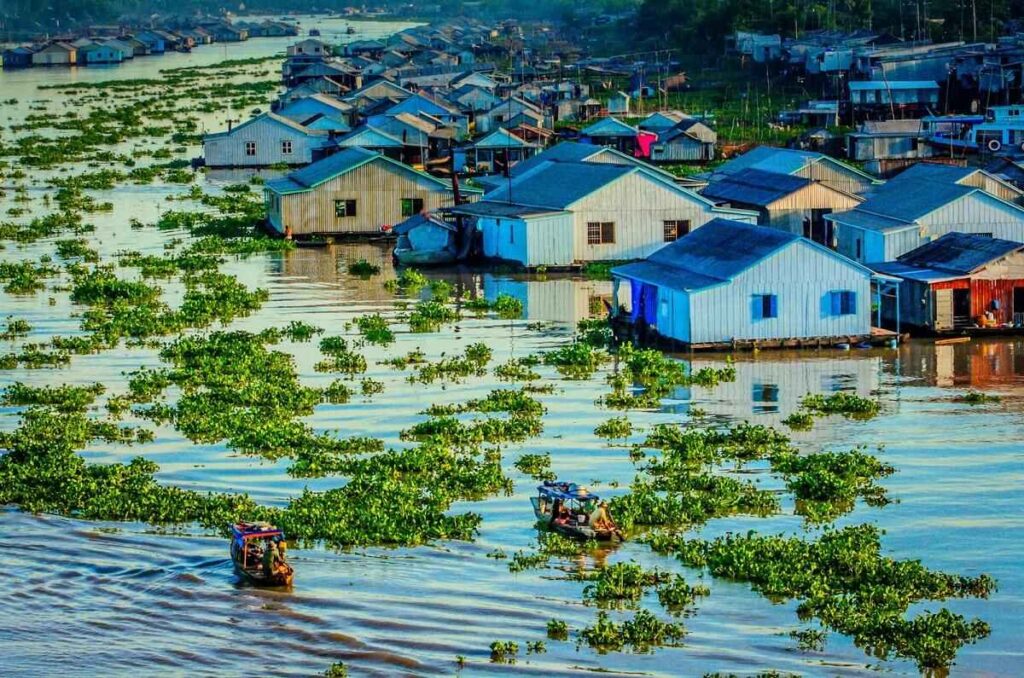
- One of Vietnam’s most approachable floating villages where you can really get close to Mekong Delta life
In An Giang province, Chau Doc’s floating village sits right on the Mekong River. Houses, shops, and even schools float here, forming a community that’s truly at home on the water.
Local families run fish farms under their floating homes, raising freshwater fish and shrimp for markets and restaurants all over the area.
The best way to see Chau Doc? Hop in a small boat and wind through the floating neighborhoods. Early mornings are the liveliest, with boats gliding between homes and villagers starting their day.
Try to visit in the morning so you can also see the nearby floating market. Locals are usually welcoming and might wave as you pass by.
3. Can Tho Floating Fish Farms and Markets Tour
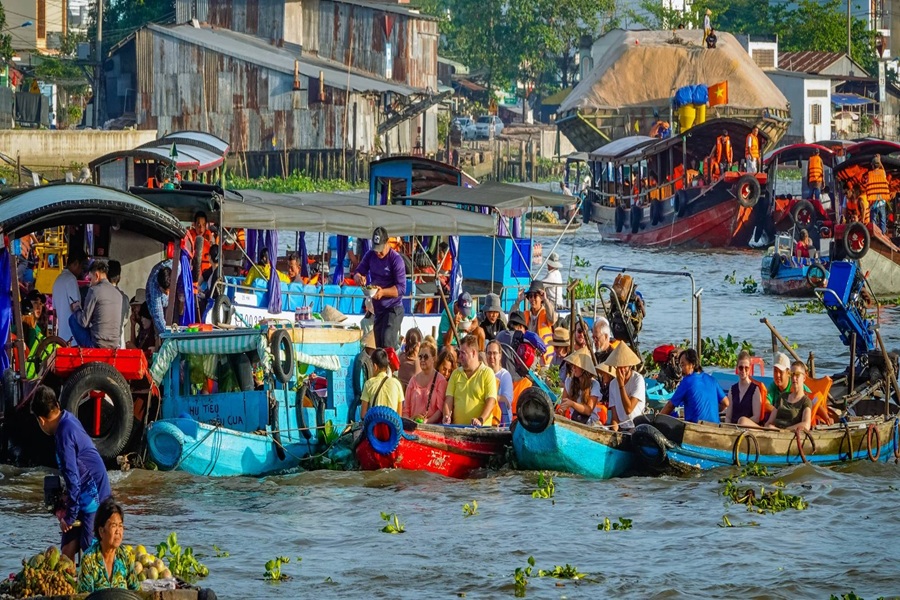
- This tour gives you a double feature: explore both the famous floating markets and the fish farms in one go.
Northeastern Can Tho city is home to floating fish farms that have become central to life in Vietnam’s Mekong Delta. These villages sprang up in recent decades, and now they offer travelers a fascinating peek into this watery way of life.
Your day usually starts early with a boat ride to Cai Rang Floating Market, one of Vietnam’s most iconic markets on water. The morning buzz—vendors passing produce from boat to boat—makes for a scene you won’t forget.
After the market, you’ll cruise over to Son islet and visit a floating fish farm. Local fishermen are usually happy to show off the fish species they raise in the Mekong.
Some tours toss in a visit to nearby fruit plantations, so you get a taste of the region’s farming, too. You might even get to try real Vietnamese food or see local crafts being made.
4. Son Islet Fruit Garden and Floating Fish Farm Visit
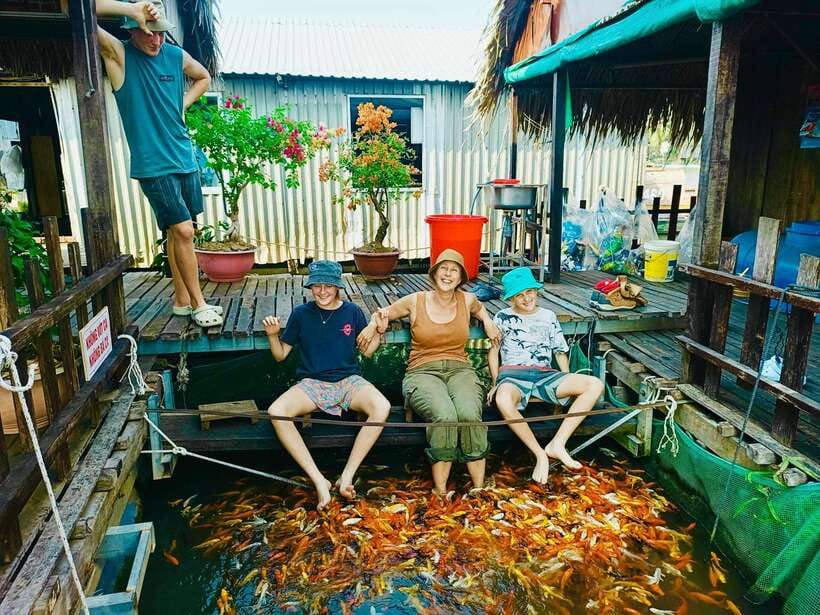
- In Can Tho, Mekong Delta, this tour pairs lush fruit gardens with an up-close look at authentic floating fish farms.
The Son Islet tour mixes natural beauty with a dose of local Mekong life. You’ll hop on a boat to this peaceful islet where everything slows down and daily routines feel a world away.
Local guides show you around tropical fruit gardens, letting you pick and sample whatever’s in season. It’s both tasty and a little bit educational.
The floating fish farms here are a real highlight. You’ll watch families raise fish in underwater cages beneath their homes. Some farms even have “flying fish” that leap out of the water—pretty wild to see.
What really sets this tour apart is the chance to try local activities. Some tours include cooking traditional Vietnamese pancakes or sharing a home-cooked meal with a family.
Prices usually start around $53 per person, but they can change depending on your group and what’s included.
5. Tra Su Cajuput Forest with Floating Market Experience
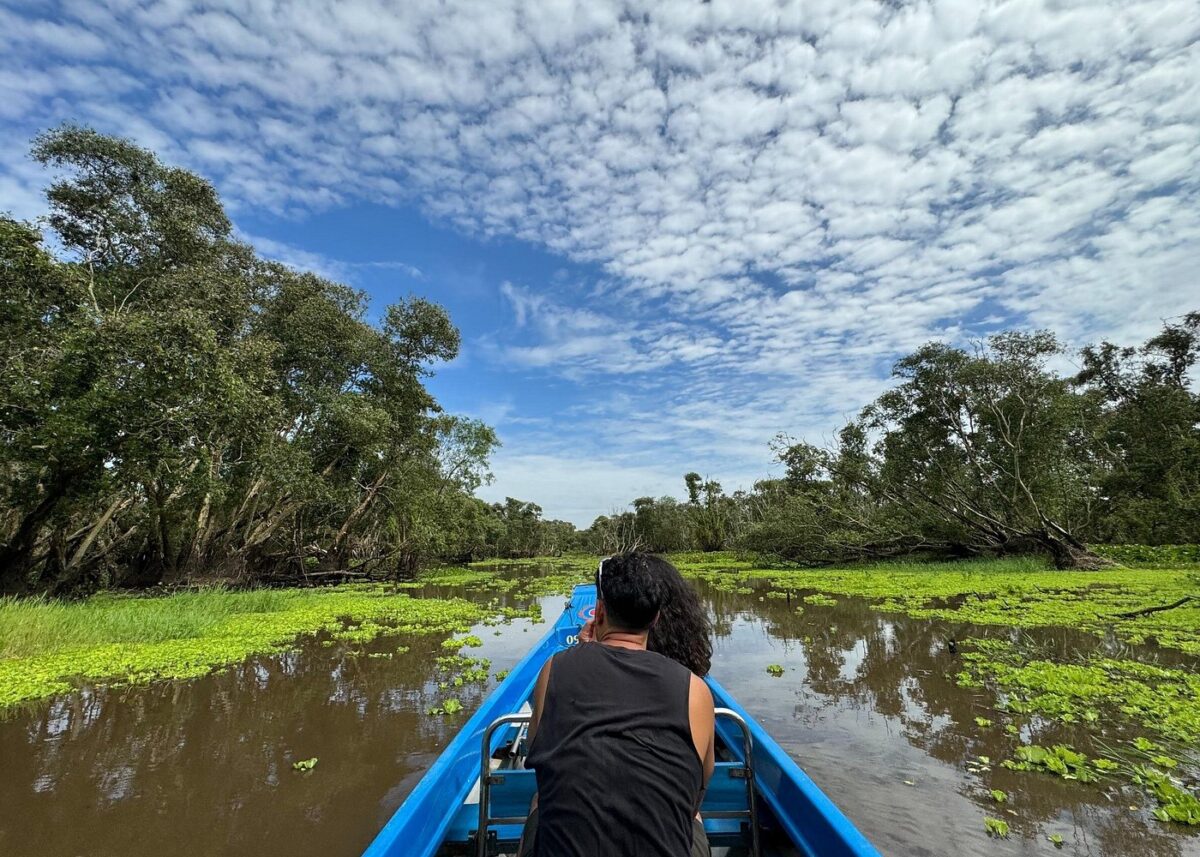
- An eco-tourism spot that blends natural beauty with classic floating market hustle
Tra Su Cajuput Forest is easily one of Vietnam’s most enchanting floating experiences. It’s in An Giang province, covering 850 hectares since 1983, and draws nature lovers from everywhere. When you visit, you’ll float through green waterways on a sampan boat, surrounded by tall cajuput trees.
Pairing the forest with a stop at Cai Rang Floating Market makes for an amazing day. Cai Rang is actually the biggest floating market in Vietnam, and you’ll see boats loaded with produce, crafts, and snacks.
Birdwatchers will love the sanctuary here. Bring binoculars—you’ll spot all kinds of wetland species. The peaceful forest and the bustling market balance each other out perfectly.
Tours often drop by local workshops, too. You might see how rice noodles are made at Sau Hoai or learn about chocolate at Muoi Cuong Cocoa Farm.
6. Oldest Floating Village Tour in Cai Beo
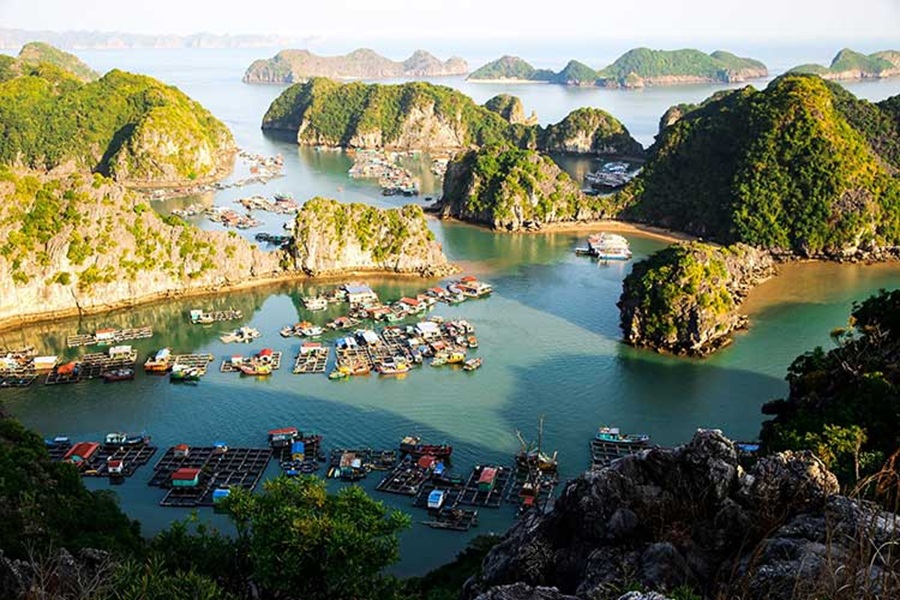
• With a history going back 7,000 years, Cai Beo stands as Vietnam’s oldest fishing village and one of Asia’s most ancient floating communities.
Visiting Cai Beo Floating Village feels like stepping straight into history. This remarkable settlement near Cat Ba town lets you glimpse a lifestyle that’s barely changed in thousands of years.
Colorful floating homes line the water, where fishing families have lived for generations. As you drift between the houses, you’ll catch fishermen fixing nets or kids playing on the decks.
Archaeologists have uncovered artifacts here that reveal Vietnam’s early maritime culture. Guides usually have stories about these finds and how they’ve changed what we know about ancient Vietnam.
Cai Beo makes a great jumping-off point for exploring Lan Ha Bay. Many tours combine the village with kayaking among limestone karsts or enjoying fresh seafood caught that day.
7. Sunset Cruise with Floating Fish Farm Visit
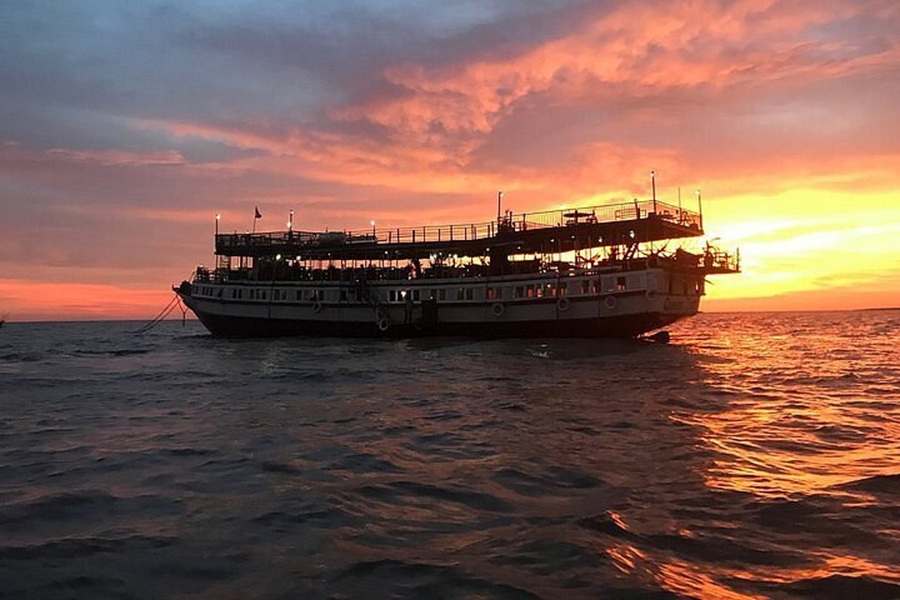
- Scenery and seafood in one go – This tour lets you soak in a Vietnamese sunset while learning about working fish farms.
As the sun sets, there’s just something special about floating on calm waters, watching the sky turn gold and pink. The Sunset Cruise with Floating Fish Farm Visit gives you exactly that kind of evening.
You’ll board a comfy boat in the late afternoon, just in time to watch the day fade away. These trips last about 4-5 hours, so you can really relax and enjoy the scenery.
The best part? Visiting the floating fish farms. Local fishermen will show you how they raise different fish and seafood. Sometimes you’ll see them feeding the fish or even harvesting the day’s catch.
Most tours wrap up with a seafood dinner, cooked right on the boat with fish from the farm. Eating that fresh catch as the sun dips below the horizon—pretty hard to beat.
Prices usually start at $62 per person, but that can change based on where you go and who you book with. Cruises run daily, so you can easily fit one into your trip.
8. Monkey Island and Floating Village Day Trip
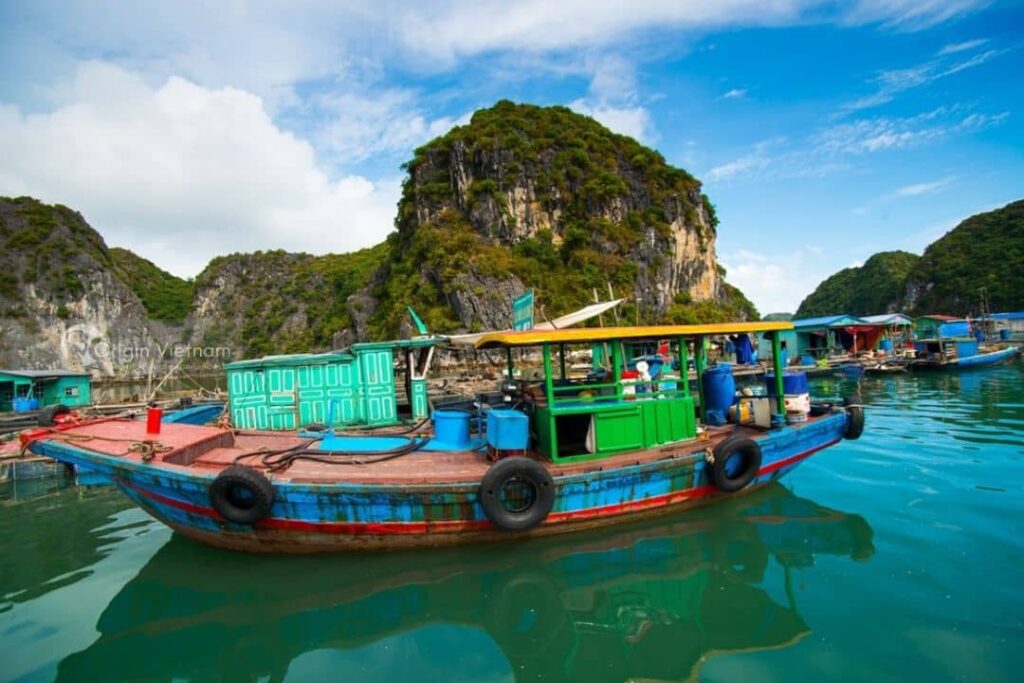
- A great mix of wildlife and local culture that highlights Vietnam’s coastal communities
If you want both land and water adventure, the Monkey Island and Floating Village Day Trip really delivers. The tour usually starts at 10:00 AM, with your guide and boat picking you up from your hotel.
You’ll head out to Cat Ba’s Monkey Island, where you can hike up to viewpoints, chill on white beaches, or watch the monkeys that call the island home. Don’t forget your camera—the views are unreal.
But for a lot of people, the real highlight is the floating villages near Monkey Island. You’ll meet families living on the water and see how they run their traditional fish farms.
Many tours offer kayaking, so you can paddle around limestone karsts at your own pace. As the day wraps up, you get to watch the sunset over the bay—honestly, it’s a fantastic way to end the trip.
Guides like Han get great reviews for being friendly and knowledgeable, making the whole experience both fun and informative.
9. Halong Bay Floating Fishing Villages Tour
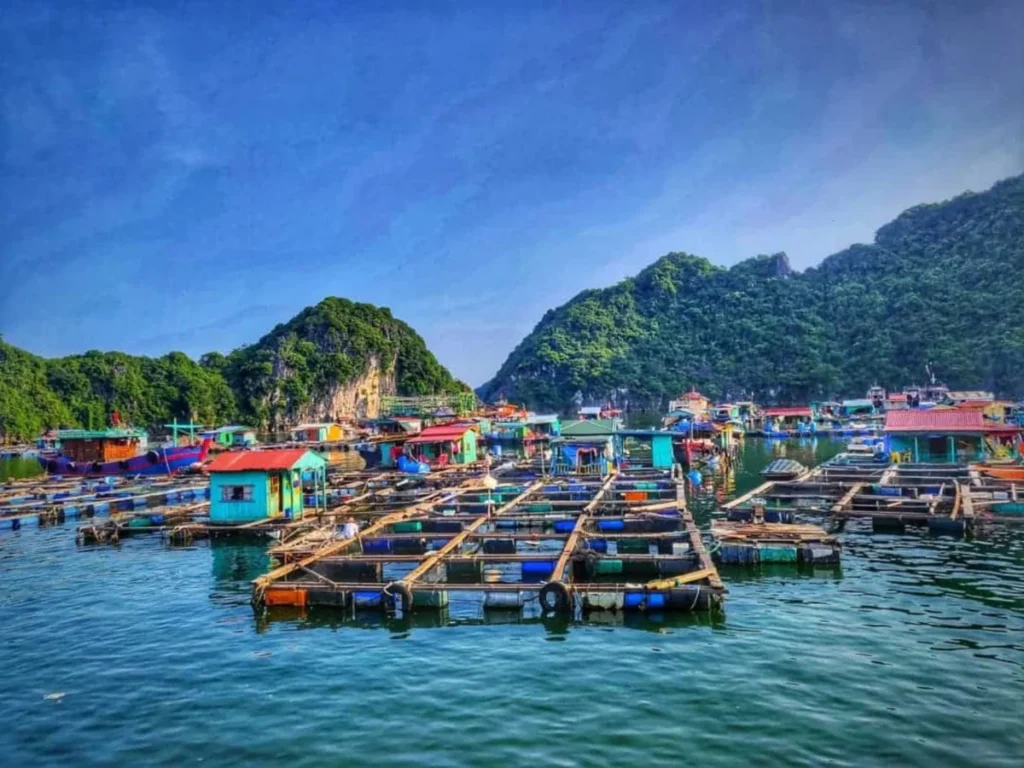
• This tour opens a window into traditional Vietnamese water life, where whole communities have lived for generations.
Halong Bay’s floating villages are something else. Gliding over the emerald water, you’ll find communities that have truly mastered life on the water. The bay has several villages—Cua Van, Vung Vieng, and Ba Hang—each with its own vibe.
You can grab a kayak and explore the villages up close. It’s a great way to see the floating homes and watch locals go about their routines.
Watching fishermen work with techniques handed down for generations is a real treat. Some tours also stop at pearl farms, where you can learn about oyster cultivation.
Those limestone karsts in the background make every photo look like a postcard. The slow pace here feels a world away from city life.
Tours usually last from a day up to three, so you have time to really soak in the scenery and the rhythm of local life.
10. Lan Ha Bay Eco Floating Farmstay Experience
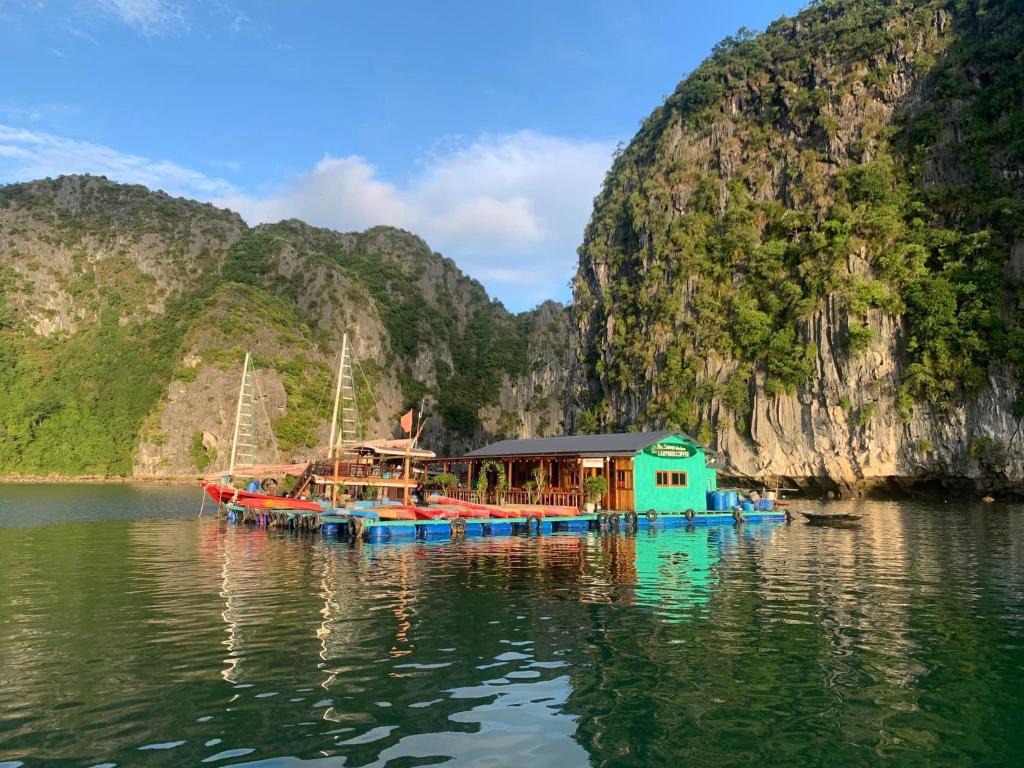
- A real cultural deep-dive that blends sustainable living with jaw-dropping Lan Ha Bay views
Right in the heart of Cai Beo floating village near Cat Ba Island, you’ll find this traditional wooden floating homestay. It’s a rare chance to live like Vietnam’s boat people, with simple but cozy rooms surrounded by Lan Ha Bay’s emerald waters.
You’re just a 16-minute walk from Đảo Khỉ Beach, so you can mix relaxation with a bit of adventure. What stands out here is the balance between comfort and real cultural immersion.
During your stay, you’ll learn about sustainable fishing and maybe even join local families as they go about their day. The peaceful vibe is a welcome break from the usual tourist crowds.
From your floating home, you can book boat tours to see the quieter parts of Lan Ha Bay. The staff can help set up kayaking trips or visits to hidden caves nearby.
Dinners feature seafood caught that very day, often cooked right in front of you by your hosts.
What To Expect On A Floating Seafood Farm Tour

Visiting Vietnam’s floating seafood farms is a mix of cultural discovery and food adventure. These tours pair traditional fishing with gorgeous scenery and, honestly, some of the freshest seafood you’ll ever eat.
Boat Transfers And Scenic Routes
Your trip usually starts with a boat ride, but it’s more than just getting from point A to B. Local wooden boats or sampans carry you through calm waters, weaving past limestone karsts and floating villages. The ride takes about 20-30 minutes—plenty of time to snap photos or just take it all in.
Guides often share stories about fishing traditions that have kept these communities going for generations. You’ll pass clusters of floating homes where families live on the water year-round.
Routes change depending on where you are—Can Tho shows off busy river life, while Ha Long Bay tours wind past dramatic rock formations. Bring a hat and sunscreen, since most boats don’t have much shade.
Farm-To-Table Seafood Experiences
The food is hands-down the highlight of any floating farm tour. You’ll see how different seafood species are raised in underwater nets and bamboo pens. A lot of farms even let you feed the fish, which is more fun than you might expect.
Farmers will walk you through their harvesting techniques and then pick out the best catch for your meal. Sometimes you might help gather prawns, fish, or shellfish, depending on what’s in season.
They cook the seafood right on the floating platforms, using simple recipes that keep the natural flavors front and center. Expect dishes like grilled fish with lemongrass, steamed clams with ginger, or prawns cooked in coconut shells.
What really makes these meals special is the insane freshness—caught and cooked within minutes. Most tours include a full lunch with a bunch of courses, and you’ll usually get rice wine or local beer to go with it.
Wildlife And Marine Life Encounters
Besides the farmed species, these tours can surprise you with glimpses of local marine ecosystems. The clear waters around the farms often draw wild fish, crabs, and sometimes even sea turtles or dolphins if you’re along the coast.
Guides love to point out interesting marine life and will explain how sustainable farming actually supports the environment. Some tours even let you snorkel, so you can check out the underwater farm structures and see wild fish up close.
Bird watching? Turns out it’s a real treat, especially if you go early in the morning. Kingfishers, egrets, and cormorants swing by the farms, hoping for an easy meal.
If luck’s on your side, you’ll catch locals showing off traditional fishing tricks like net casting or trap setting. Watching these time-honored methods in action gives you a sense of how local knowledge and newer sustainable practices work together to keep both the people and the ecosystem thriving.
Responsible Travel And Sustainability
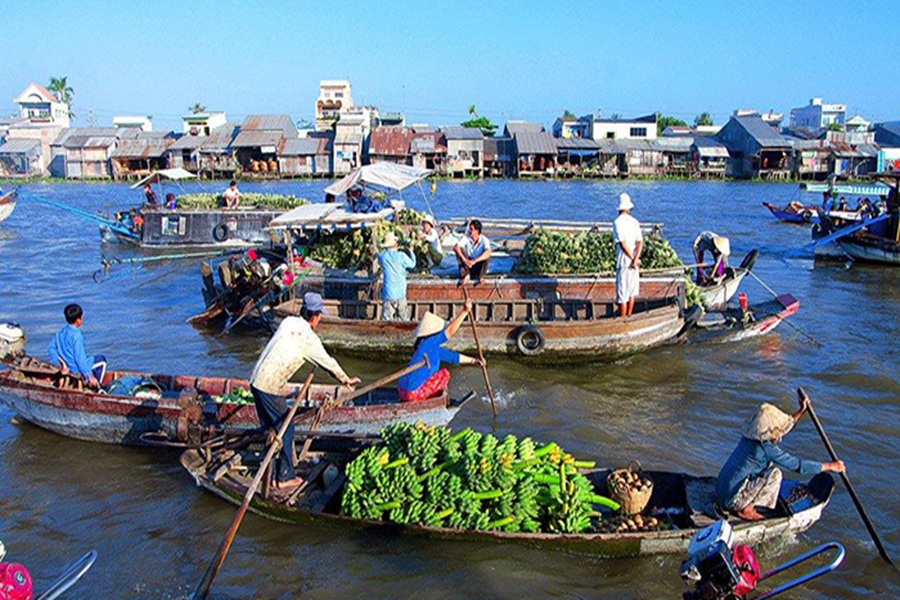
Visiting floating seafood farms in Vietnam isn’t just about the scenery or the food. The choices you make as a traveler can actually matter. Responsible tourism helps protect the environment and supports the local communities that rely on these unique places.
Supporting Local Communities
Floating seafood farms in Vietnam aren’t just tourist spots—they’re the backbone of many coastal economies. If you book tours directly with local operators, more of your money stays in the area and goes to families who’ve kept these traditions alive for generations.
Plenty of farms invite visitors to learn traditional fishing and farming techniques from people who know them best. This kind of cultural exchange can be surprisingly meaningful, and it helps keep important practices from fading away.
Seek out tours that hire local guides and staff from nearby villages. These folks usually have stories about life on the water that you won’t find anywhere else.
Some responsible operators, like those highlighted by Responsible Travel, put part of their profits back into community development, including education and healthcare projects in fishing villages.
Environmental Considerations
Seafood farming’s environmental impact really depends on how each farm operates. Sustainable farms—like the ones Ocean Wise mentions in their feature on Vietnamese shrimp—use methods that keep pollution down and protect the local ecosystem.
Before you book, try to find farms that practice things like:
- Proper waste management
- Minimal antibiotics or chemicals
- Sustainable feed sources
- Protecting mangrove forests
A lot of farms are getting creative about shrinking their environmental footprint. You’ll see water recycling, solar panels, and integrated multi-trophic aquaculture, where different species help clean the water naturally.
Climate change is already making life tougher for coastal aquaculture. By supporting farms that care for the environment, you’re helping Vietnam’s coasts stick around for the next generation.
Frequently Asked Questions
Planning a visit to Vietnam’s floating seafood farms? You probably have a few questions about what to expect and how to get ready. People often wonder about the best times to visit, what they’ll actually see, and how to make the most of the trip.
What can you expect to see when visiting floating seafood farms in Vietnam?
You’ll see a fascinating network of floating wooden structures where locals raise fish, shrimp, and other seafood in netted enclosures. Most farms sit on bamboo rafts or wooden platforms, bobbing gently on the water.
Farmers feed the fish and check on their stock right in front of you. Some farms have small retail spots where you can buy the day’s catch, fresh as it gets.
In places like Lan Ha Bay, you might spot fishermen using age-old techniques passed down through generations. The sight of traditional fishing against those limestone cliffs? Pretty unforgettable.
How do you choose the best floating market tour in the Mekong Delta?
First, think about what time of day you want to go. Early morning (like 5-7 AM) is when the markets buzz with local traders—it’s the real deal.
Pick tours that visit smaller, less touristy markets such as Phong Dien instead of just the famous Cai Rang. The smaller ones tend to feel more authentic and relaxed.
See if the tour throws in stops at local workshops or fruit gardens along with the market. Visiting a place like Son Islet’s fruit gardens pairs nicely with the floating market vibe.
Group size matters. Smaller groups mean you get more attention and can actually ask questions about what you’re seeing.
Are one-day tours sufficient to experience the vibrancy of Mekong Delta’s floating communities?
One-day tours give you a taste of the Mekong Delta’s floating life, but they barely scratch the surface. These quick trips usually cover a single big floating market and maybe a short stop at a workshop or garden.
You’ll miss the real early morning market rush unless you’re up for leaving your hotel at 4 or 5 AM. That’s when the markets come alive.
If you want to dig deeper, look into at least a two-day tour. You’ll catch both sunrise and sunset on the delta and get a feel for how river life changes through the day.
What are the unique experiences offered by multi-day Mekong Delta tours?
Multi-day tours often include homestays with local families, so you actually get to experience Mekong Delta cooking and daily routines. You might even help prep dinner or pick up a cooking tip or two.
These longer trips usually hit several floating markets, including some hidden gems that day-trippers never see. Every market has its own vibe and specialties.
There’s time to really explore the waterways by sampan, those small wooden boats, letting you reach villages and farms way off the beaten path. Evening cruises on the quiet river? Magical.
Many tours add cycling through rural villages and fruit orchards between boat rides. Mixing up the transport helps you really get what delta living is all about.
How do visitors typically review their experience of the floating seafood farms tours in Vietnam?
Most visitors call their floating seafood farm tours eye-opening and genuinely enriching. They’re often surprised by how inventive these water-based communities are.
Tasting seafood straight from the farm stands out as a highlight for a lot of people. Many tours serve meals with fish or shrimp caught that morning.
Some travelers admit they worried about authenticity at first, but those doubts usually vanish in less-touristy spots like the floating villages near Chau Doc. The more remote the location, the more real it feels.
Photography buffs rave about the visuals—colorful boats, misty mornings, and the faces of local farmers and vendors. There’s just something about the light on the water that makes everything pop.
What should you pack for a comfortable and enjoyable floating village tour in Vietnam?
You’ll definitely want good sun protection—think a wide-brimmed hat, sunglasses, and some reef-safe sunscreen. The glare from the water can be surprisingly harsh, even if it doesn’t look super bright out.
Quick-dry clothing just makes life easier, and I’d toss in a light raincoat if you’re visiting between May and October. Those sudden showers? They show up out of nowhere but usually don’t stick around too long.
Mosquitoes can be relentless at dawn and dusk, so bring insect repellent. Long sleeves and pants might seem overboard, but if you’re sensitive to bites, they’re worth considering.
A waterproof bag or case for your phone and camera—trust me, you’ll want one. Small boats and splashing water go hand in hand.
Shoes matter more than you’d think. Go for comfortable sandals with back straps or water shoes, since you’ll probably get your feet wet and decks can get slippery.

Leave a Reply